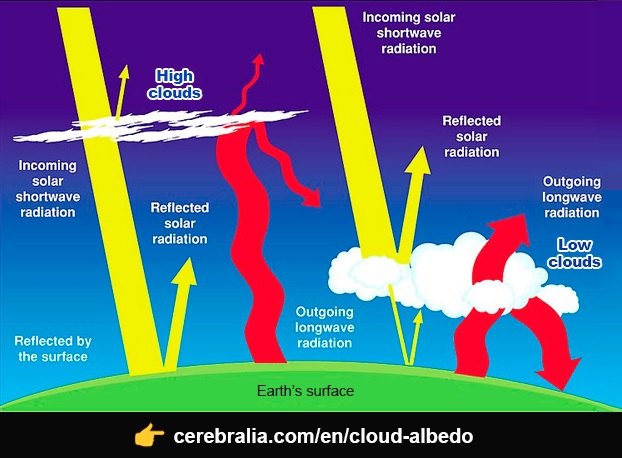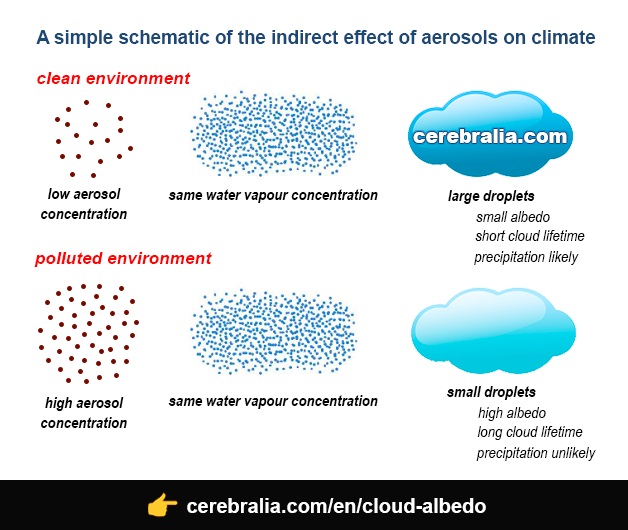Share on:
Cloud albedo
The proportion of incident radiation reflected by a substance is called its albedo. Cloud albedo is a measure of the albedo or reflectivity of a cloud. Clouds regulate the amount of solar radiation absorbed by a planet and its solar surface irradiance. Generally, increased cloud cover correlates to a higher albedo and a lower absorption of solar energy.
Clouds are important in the climate system. Cloud albedo strongly influences the Earth's energy budget, accounting for approximately half of Earth's albedo. Cloud albedo depends on the total mass of water, the size and shape of the droplets or particles and their distribution in space.

The albedo of low thick clouds such as stratocumulus is about 90 percent. They reflect a large amount of incoming solar radiation, translating to a high albedo. The albedo of high thin clouds such as cirrus may be as low as 10 percent. They tend to transmit more solar radiation and, therefore, have a low albedo. Changes in cloud albedo caused by variations in cloud properties have a significant effect on global climate.
On a microscopic scale, clouds are formed through the condensation of water on cloud condensation nuclei, such as pollution and aerosol particles. The size, concentration, structure, and chemical composition of these particles influence cloud albedo. For example, black carbon aerosol particles absorb more solar radiation and sulfate aerosol reflects more solar radiation.
Aerosol influence on clouds
Human activities have increased the amount of particles in the atmosphere, resulting in increased number concentration of cloud droplets compared to an unpolluted cloud.
This means that the cloud water will be distributed over a larger number of droplets, making the droplets smaller in size. However, the net effect of the increased number of droplets is increased surface area leading to increased scattering of light, thus increasing the cloud albedo. This is called the first indirect effect of airborne particles.

There is also a second indirect effect. This effect is just like the first effect connected with the change of droplet number and size. Reduced droplet size lowers sedimentation velocities of the cloud droplets. Gravitational settling velocities are important for the formation of precipitation.
As a result of the reduced droplet sizes, precipitation formation could be delayed or inhibited. This second indirect effect thus could cause increased cloudiness as a result of increased lifetime of the cloud, which means more time for such clouds to scatter solar radiation back to space.

